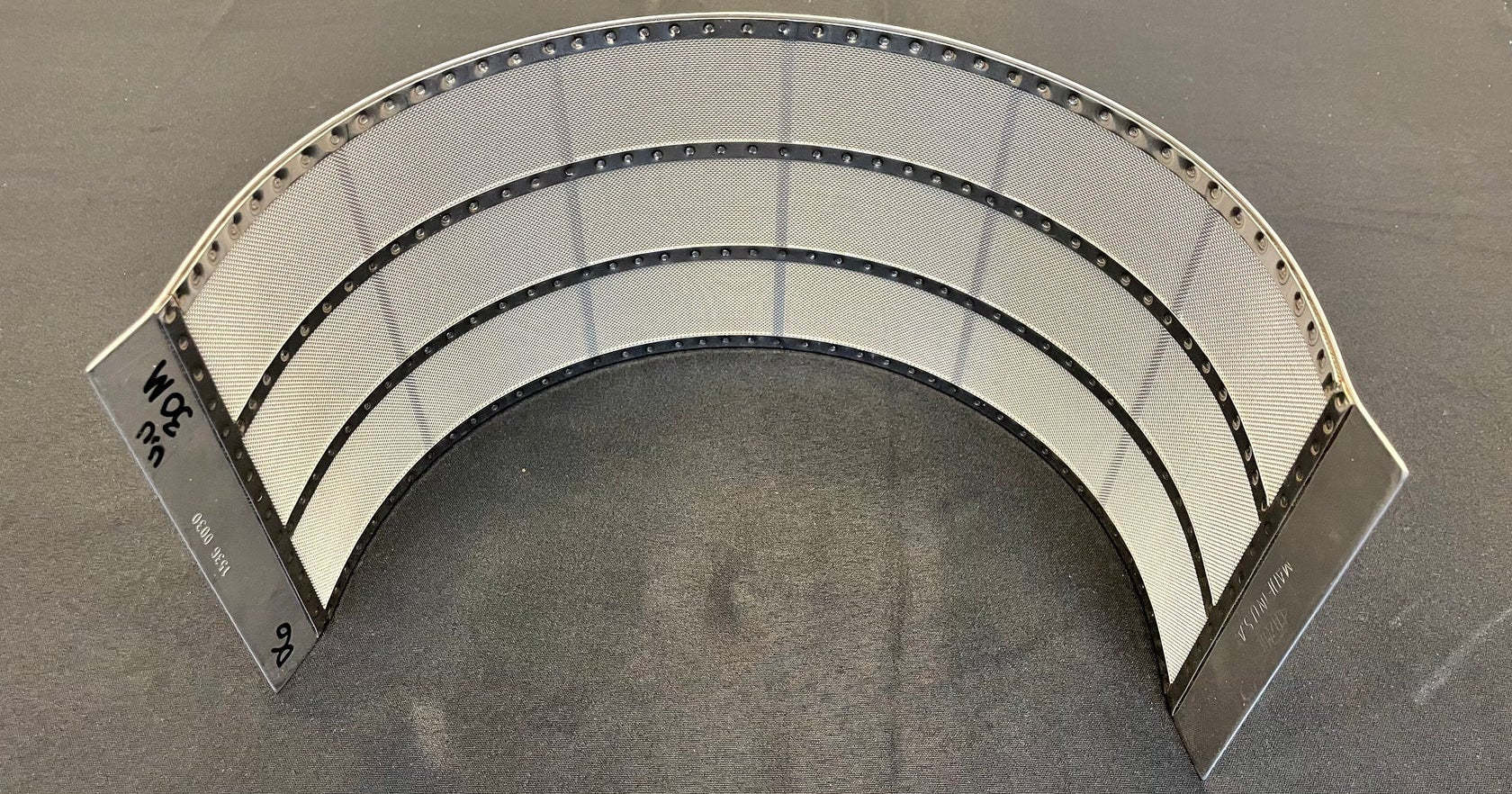Why is the Fitzpatrick Fitzmill Screen Important?

The Fitzpatrick Fitzmill screen is a vital component in particle size reduction, especially when using a Fitzmill hammer mill or comminutor mill. Choosing the right screen helps ensure precise particle size and consistency in the final product, maximizing efficiency and quality in various applications like food processing, pharmaceutical manufacturing, and more. Whether you’re processing granules, powders, or other materials, the screen you choose can make a big difference in your milling process.
For precise opening size in inches or metric conversions, refer to a Fitzmill Screen List. Contact us for a high-resolution version of the chart if you need more detail.
Key Factors in Choosing the Right Fitzmill Screen
When selecting a Fitzmill screen, consider these essential factors to achieve optimal milling performance:
-
Particle Size Requirements: Define your target particle size distribution. The Fitzpatrick Company offers screens in various hole sizes, allowing for precision particle size reduction based on your specific needs.
-
Material Compatibility: Consider the properties of the material being processed. Stainless steel screens are commonly used due to their durability and resistance to contamination. However, certain applications may require specific materials like nylon or polyurethane for enhanced resistance to corrosion or abrasion, depending on the processing equipment requirements.
-
Screen Type: Fitzmill screens come in different types, including round, square, and conical holes. Each has unique benefits depending on the material flow and product containment needs. For example, a round hole screen may be ideal for general de-lumping, while a square hole screen might be better suited for granules and coarse grinding.
-
Screen Size and Screen Size Chart: The screen size affects both throughput and the final particle size. Refer to a Fitzmill screen size chart to determine the correct dimensions that will match your target production rate and desired particle size distribution.
-
Screen Material: Stainless steel construction is standard for screens in most Fitzpatrick Fitzmill models, such as the Fitzmill D6A and Fitzmill DAS06, due to its robustness and ease of cleaning. Stainless steel contact parts also ensure that contamination is minimized, an essential feature for pharmaceutical and food processing applications.

Steps to Determine the Right Fitzmill Screen Size
-
Conduct Particle Size Analysis: Use tools like sieve analysis or laser diffraction to determine the range of particle sizes present in your product. This analysis is essential in selecting a screen that will achieve the desired particle size reduction efficiently.
-
Consult with the Techceuticals: Reach out to Techceuticals. They can offer guidance on compatible screens for your specific Fitzmill model (such as model D or M5A), based on your milling requirements and operational goals.
-
Test and Evaluate: Experiment with different screen sizes and types to find the most suitable option. This hands-on testing will allow you to evaluate performance based on factors like particle size distribution, milling efficiency, and product quality. Techceuticals formulation and process assistance can help.
Benefits of Choosing the Right Fitzmill Screen
-
Improved Product Quality: Selecting the correct screen size ensures consistent particle size, which results in a high-quality product with uniform characteristics, whether it's fine powder or coarser granules.
-
Increased Efficiency: The right screen choice minimizes energy use, maximizes throughput, and reduces product loss, leading to an overall increase in milling efficiency.
-
Extended Equipment Life: By using a compatible screen, you can minimize wear on the motor drive, screen, and other components, prolonging the Fitzmill machine's lifespan.
-
Enhanced Process Control: Choosing the right screen type and size gives you better control over the milling process. For example, a gravity feed setup may benefit from a conical screen, while a screw feed configuration could work best with a larger mesh.
Fitzmill Screen Types and Materials
Each Fitzmill screen type is designed for specific applications. For instance, round hole and square hole screens are commonly used in comminuting machines for de-lumping, while conical screens are better suited for fine grinding and controlled particle size reduction. Many Fitzpatrick Fitzmill models, such as the DAS06 and L1A, offer tooling flexibility, allowing you to swap out screens for various particle size reduction requirements.
Stainless steel remains the material of choice for Fitzmill screens because of its durability and compliance with food and pharma industry standards. However, polyurethane and nylon may also be considered for unique applications that require different material properties.
Common Fitzmill Models and Their Features
Popular Fitzmill models like the Fitzmill DAS06, Fitzmill D6A, and Fitzmill M5A each have unique characteristics that can be optimized with the right screen choice. These models are often equipped with features like casters, infeed hoppers, and stainless steel construction for enhanced functionality and portability.
Conclusion
Choosing the right Fitzpatrick Fitzmill screen is crucial for optimizing the milling process, ensuring product quality, and extending the equipment’s life. By considering factors such as particle size requirements, material compatibility, screen type, size, and construction, you can select a screen that meets your production goals. For additional guidance, reach out to Techceuticals or consult with an equipment supplier like Federal Equipment Company. This approach will help you achieve consistent, high-quality results in food processing, pharmaceuticals, and other industries that require precise particle size control.
By selecting the appropriate Fitzmill screen size, you can improve overall efficiency, reduce wear on the motor drive, and optimize your Fitzmill hammer mill or grinder for better performance.


